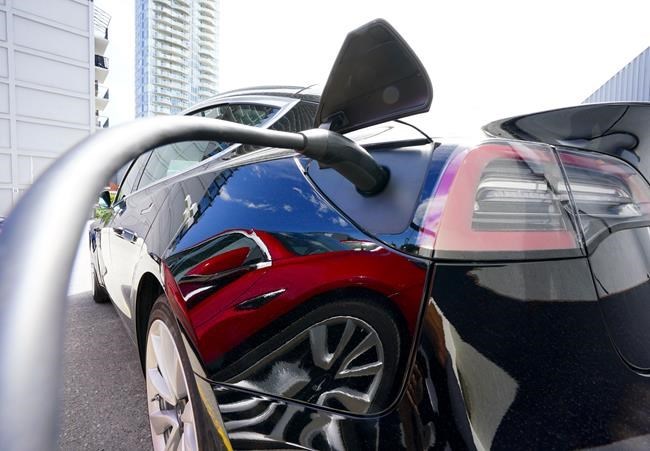OTTAWA — If you live in Montreal or Vancouver and own an electric car, finding somewhere to charge it is likely as easy as a quick search of an app on your smartphone.
If you live almost anywhere else in Canada, the struggle to find a charging station is real.
"Things have progressed really well in Quebec and British Columbia," said Jeff Turner, director of mobility for the Montreal-based research firm Dunsky Energy and Climate.
As of Aug. 15, a charging station database maintained by Natural Resources Canada lists almost 23,000 charging ports in more than 9,100 public locations across Canada.
Almost 12 per cent of them are on the Island of Montreal alone. Another 10 per cent are in the greater Vancouver area.
Overall, Turner said, Canada is improving when it comes to installing the charging stations needed to meet its electric-vehicle goals. But the installations are unevenly distributed, much like EV uptake, and there's still a ways to go to reach the targets.
Canada is aiming for one-fifth of all new cars sold to be electric by 2026, 60 per cent by 2030 and 100 per cent by 2035.
A Dunsky analysis commissioned by Natural Resources Canada and published in March 2022 projected that to meet those targets, the country will need about 52,000 public charging ports by 2025.
Dunsky said that there will be a need for between 195,000 and 201,000 charging ports by 2030, and between 442,000 and 499,000 by 2035.
The number needed after that starts to depend more heavily on the number of chargers installed at apartment and condo buildings. The more people can charge their vehicles at home, the fewer public chargers are needed for day-to-day driving needs.
Dunsky said more than 90 per cent of the new chargers should be Level 2 chargers, which can typically fully charge a battery-electric vehicle in about eight hours, or a plug-in battery and gas hybrid in about four hours.
DC fast chargers, which can get a battery-powered vehicle about 80 per cent charged in 30 minutes, are needed more along the country's highway system, so people can take longer trips without waiting a long time for a charge.
They're less of a priority for street corners and in public parking lots that support electric vehicles for day-to-day use.
Currently, about 80 per cent of the charging ports in Canada are Level 2, or just over 18,000 of the 22,745 total ports.
Since December 2021, Canada has added, on average, about 400 new ports each month. About one in five of those were DC fast chargers, and four in five were Level 2.
Nationally, Canada has already exceeded the number of DC fast ports that Dunsky said were needed by 2025 — there are 4,400 such ports, and the Dunsky report called for 4,300.Â
But they are unevenly distributed: 39 per cent of them are in Quebec, 31 per cent in Ontario and 19 per cent in B.C.
Dunsky said the total number of such chargers should be tripled by 2030.Â
For Level 2 chargers, the goalposts are further away. Dunsky called for 48,000 ports by 2025. Canada would have to increase its current pace of installations from about 300 per month to more than 1,000 to meet that.
The federal database has 4,600 level 2 chargers listed as planned.
Brian Kingston, president of the Canadian Vehicle Manufacturers' Association, said study after study has shown that lack of available charging is one of the key obstacles to EV ownership.
"It's one of my biggest worries," he said in an interview earlier this summer.
Quebec and B.C. have long been the nation's leaders on the electric-vehicle front.Â
Both provinces were the first to introduce a consumer rebate for the purchase price of an EV, and they are the only two with sales mandates that require dealerships to ensure a minimum share of the vehicles they sell are powered by electricity.
About 45 per cent of the EVs in Canada are registered in Quebec, and 26 per cent are in B.C.
Kingston said improving uptake everywhere means making charging easier.Â
The federal government has several programs in place to help get chargers built.Â
Since 2019, Ottawa has committed $680 million toward a zero-emission vehicle infrastructure program that eyes a goal of installing 84,500 ports by 2029. The Canada Infrastructure Bank also announced last year it would commit $500 million to a large-scale EV charging and hydrogen refuelling initiative.
Kingston said he wants to see more urgency to such rollouts and a heavier focus on getting chargers installed at apartments and condos.
This report by The Canadian Press was first published Aug. 16, 2023.
Mia Rabson, The Canadian Press




